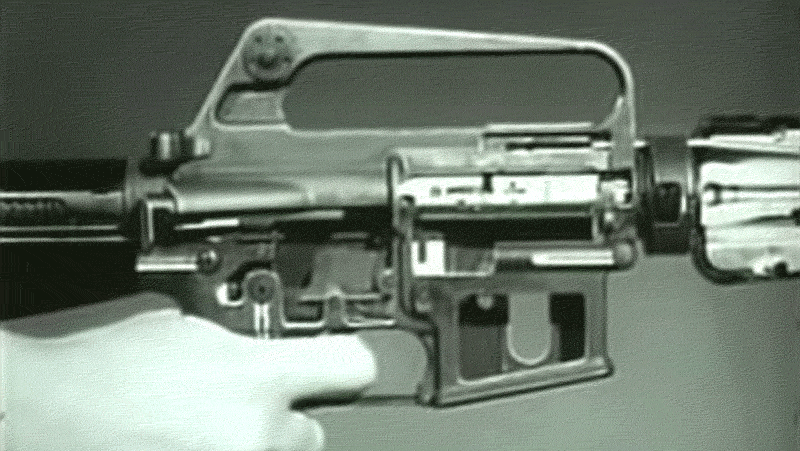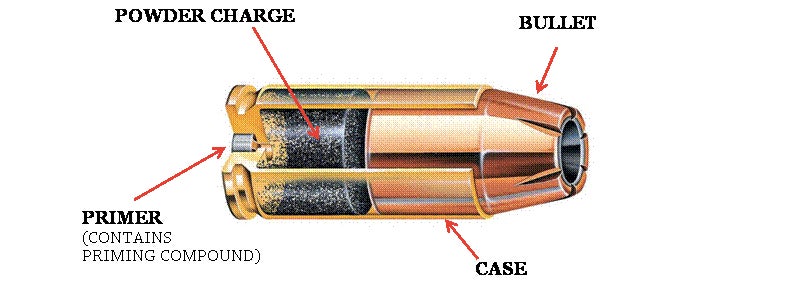An Essential Guide To Gun Safety For People Who Hate Guns

This article was originally posted on Indefinitely Wild by Wes Siler. Glad we could help bring a little more knowledge to the masses regarding gun safety. Remember, there is no substitute for professional training.
****
There are at least 347 million guns in America. No matter your opinion of them, it is highly likely that you will encounter one at least sometime during your life. This is what everyone needs to know in order to be safe around guns.
This is not a political argument. This is not an argument for guns or against guns. It is a practical guide to gun safety for people living in a country where there’s more of them than there are of us.
Why can’t you just leave your gun safety at not touching one if you see one? Well, denial isn’t really a practical resolution to problems, is it? In the 12-month period following the Sandy Hook Elementary shooting, 100 children aged 14 and under were killed in accidental shootings; 80 more children than were killed in the tragedy itself.
The CDC estimates that there were 591 deaths (all ages) in the US in 2011 due to “accidental discharge of firearms,” and 248 due to firearms operated with “undetermined intent.”
And all of those deaths are completely preventable. Yes, that could be achieved by waving a magic wand and ridding the earth of guns, but much more realistic is educating yourself and your loved ones about gun safety, thereby ensuring that you know how to avoid shooting yourself or someone else should you or they encounter one.
To create this article, I needed an expert in firearms. And, who knows more about them than a special forces soldier who served in Iraq and Afghanistan? And, who knows more about gun safety than someone who keeps guns in a house alongside two young girls? That person is Matthew Griffin, a former captain in the Army Rangers who is now providing economic opportunity and education for women in war zones.
“Kids do stupid stuff and accidents are likely to happen around kids doing stupid stuff,” explains Griff. “I took the time to teach my kids about firearm safety and how to make common types of gun safe.”
“Every time we handle weapons, I ask my kids the same question: ‘Sweetie, what does a gun do?’”
“The answer: ‘What I tell it to.’”
There are five rules of firearm safety, but only two matter if you’re not going to shoot one:
- Don’t point the gun at anything you don’t want to get shot.
- Don’t put your finger on the trigger.
“You can mess up either one of them,” says Griff. “But mess up on both and you just created the likelihood of a major accident.”
Better yet: don’t mess up either.
Let’s say you’re at a friend’s house and they pull out a gun to show off. It might be theirs, it might be their parents; that doesn’t matter. This happens. If you know what to do, you can politely ask to see the gun, then ensure that it is safely unloaded, thereby ensuring both your safety and that of everyone else nearby.
If you can leave a gun alone, leave it alone, but the above scenario and ones like it are all too common. Knowing how to make a gun safe is simply a practical skill anyone living in a country with more guns than people needs to know. Just like you know how to change the tire on your car, how to use a fire extinguisher and what to do in an earthquake, you need to know what to do with a loaded gun.
To do this, you first need to understand how a gun works. No gun is any more than a bunch of metal and plastic parts assembled in a way that moves a projectile through explosive force. Let’s break that down:
 The Bullet: Made of four basic parts. The primer starts the ignition process of the gunpowder. The casing holds the gunpowder. The gunpowder is a propellant used to create force. The projectile is the object moved by that force. When the primer is struck, the gunpowder ignites and forces the projectile of of the casing and down the barrel of the gun. That projectile is pushed out of the barrel of the gun and works to poke holes in stuff at high velocity. The point of this article is to stop those holes from being created unintentionally.
The Bullet: Made of four basic parts. The primer starts the ignition process of the gunpowder. The casing holds the gunpowder. The gunpowder is a propellant used to create force. The projectile is the object moved by that force. When the primer is struck, the gunpowder ignites and forces the projectile of of the casing and down the barrel of the gun. That projectile is pushed out of the barrel of the gun and works to poke holes in stuff at high velocity. The point of this article is to stop those holes from being created unintentionally.
 The Weapon: Most guns have a safety, a trigger, a breach or chamber and a barrel. The safety is a mechanical device that prevents the gun from being fired. As a mechanical device, it’s subject to failure like any other and should not be relied upon over those two gun safety rules above. Pull the trigger and the gun goes boom. The breach/chamber is where the bullet is held before and while it’s fired. The barrel is the cylinder that contains the explosive force of the gunpowder, propelling the projectile down to the muzzle, the hole in the business end of the gun.
The Weapon: Most guns have a safety, a trigger, a breach or chamber and a barrel. The safety is a mechanical device that prevents the gun from being fired. As a mechanical device, it’s subject to failure like any other and should not be relied upon over those two gun safety rules above. Pull the trigger and the gun goes boom. The breach/chamber is where the bullet is held before and while it’s fired. The barrel is the cylinder that contains the explosive force of the gunpowder, propelling the projectile down to the muzzle, the hole in the business end of the gun.
A gun is safe when you can visually confirm that there is not a bullet or casing in the breach/chamber of the gun.
“This is how I teach my children to identify a safe weapon,” says Griff. “This is also what a responsible gun owner will enable you to see before transferring a weapon between shooters.”
To make a gun safe, you unload the gun, open the action to identify the breach and ensure you can visually identify there is not a bullet or casing in the barrel. This is what we’re going to show you how to do.
“In my experience, the process of unloading/clearing the gun is the most likely time to have an accidental discharge,” explains Griff. “A friend shot himself through the hand because he got distracted by his wife while unloading his everyday carry pistol. A former military colleague with 15 years of firearms experience discharged a round from his M4 because he didn’t watch the casing eject from the weapon at a clearing station. Another friend almost blew his toes off with a single-shot rifle because he missed catching the hammer with a gloved thumb. All of these were avoidable; pay attention to what you’re doing, keep the gun pointed in a safe direction and keep your finger off the trigger.”
These are the types of guns you will mostly likely encounter anywhere in the world, and how to make them safe, with annotations from Griff.
Semi-Auto Pistol: “This is what you’re likely to see on streets, in homes, or on the range. Drop the magazine, lock the slide to the rear and look into the chamber from the ejection port.”
Semi-Auto Hunting Rifle: “In my experience, these are the most complicated to figure out because of the variety of configurations. With any semi-automatic firearm, the sequence is key. Drop the magazine holding the extra rounds, pull back the action to eject any round that may be in the chamber, then visually inspect the chamber to ensure it’s clear.”
Pump Shotgun: “A home defense favorite, so it’s likely going to be left accessible. This can be another frustrating weapon to unload depending on its configuration. Take your time and keep it pointed in a safe direction. Unload all the rounds from the tubular magazine and open the action to ensure there is not a shell in the chamber.”
Semi-Auto Shotgun: “Once you figure out how semi-autos work, they become very easy to operate. Point the weapon in a safe direction and cycle the action until shells quit falling out. Then visually inspect the chamber to ensure there are no rounds present.”
AR-15: “Don’t be scared. It’s just a rifle that’s colored black and looks somewhat cool. Drop the magazine, pull the charging handle to the rear, engage the bolt catch and ensure there is not a round in the chamber.”
AK-47: “If you travel outside the US, you’re going to see AKs. Knowing how to identify a ‘hot’ AK, operate it and disarm this weapon is a critical skill if you’re going to leave the resorts. Grab the magazine with your left hand, hit the release with your left thumb and rock the magazine forward and down. Roll the weapon counterclockwise 90 degrees and use your left hand to pull back the charging handle. Visually inspect the chamber. Try to stop Ice Cube from playing in your head, I dare you.”
Single-Action Revolver: “A vintage-style handgun. If you see one of these, understand that it has the most arduous unloading process of any weapon listed here. But it’s worth it. Point the weapon in a safe direction, open the loading gate, pull the hammer back to half-cock and roll the cylinder and pull the plunger until all the rounds are empty.”
Double-Action Revolver: “Another everyday carry favorite and the second-most simple gun to unload. Point it in a safe direction, push the cylinder release, roll the cylinder to the side and pull the plunger to dump the rounds.”
Bolt-Action Rifle: “A favorite at hunting camp. Locate the magazine release and dump the unspent rounds from the bottom of the gun. Rotate the charging handle up and back, eject the last round and leave it open to inspect the chamber.”
Break-Action (rifle, shotgun or pistol): “The simplest gun to unload. Push the lever by the thumb on the trigger hand, fold the gun open at its pivot, remove the rounds. Leave it open to confirm it’s empty.”
Lever-Action Rifle: “For old time’s sake. Cycle the action like a cowboy until it stops spitting rounds. Go get a bourbon.”
Think we missed anything? Let us know.
And to recap:
- Point the weapon in a safe direction.
- Keep your finger off the trigger.
- A weapon is safe when you can visually inspect that the chamber is empty.
“A gun does what you tell it to,” finishes Griff. “As long as you tell it to be safe, it will be safe. There’s no substitute for proper firearms training and I hope the lessons here will encourage you to take a family outing, go to a gun range, and teach yourself, spouse, and kids how to safely disarm a gun.”
IndefinitelyWild is a new publication about adventure travel in the outdoors, the vehicles and gear that get us there and the people we meet along the way. Follow us on Facebook, Twitter and Instagram.




Leave a comment